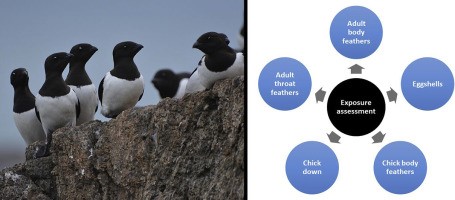Contaminants in the Arctic
EN: Exposure of a small Arctic seabird, the little auk (Alle alle) breeding in Svalbard, to selected elements throughout the course of a year
Aneta Dorota Pacyna-Kuchta, Dariusz Jakubas, Marcin Frankowski, Żaneta Polkowska, Katarzyna Wojczulanis-Jakubas
Science of The Total Environment, Available online 3 May 2020, 139103.
Although remote and Arctic area is mostly non-industrialised and sparsely occupied, it is still exposed to multiple pollutants. To assess the range and effect of anthropogenic contamination in this unique and fragile ecosystems it is important to monitor their concentration in the Arctic organisms. In this study we examined concentrations of nineteen elements in various samples (feathers moulted in different parts of the year, and egg-shells) collected from a High Arctic seabird, the little auk. Our results indicate high exposition of birds to various contaminants but primarily outside the High Arctic (during their wintering period). While in the Arctic zone, the birds seem to be relatively free of human-originated contaminants. That is a good news but the pollution is a dynamic issue and it is important to keep this monitoring. Therefore, our results apart from being a base of assessment of the current situation constitute a valuable source of reference for future studies. More: https://doi.org/10.1016/j.scitotenv.2020.139103
Owing to the multidisciplinary character of the study and collaboration with Technical University in Gdańsk, Poland, the paper has just been published in a prestigious journal Science of the Total Environment.






